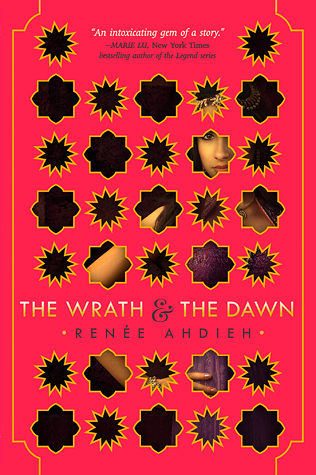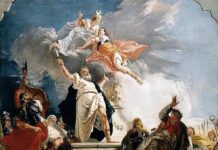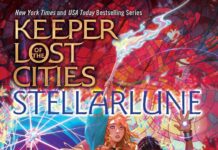In the opulent world of “The Wrath and the Dawn,” author Renée Ahdieh weaves a tale that is as intricate as the tapestries that adorn the palaces of its setting. Drawing inspiration from the timeless saga of Scheherazade,Ahdieh invites readers into a narrative rich with romance,intrigue,and the quest for justice. As each chapter unfolds, the delicate threads of fate intertwine, revealing characters who are as multifaceted as the destinies they navigate. This review delves into the lush landscapes of Ahdieh’s storytelling,examining how she artfully blends myth with motivation,and explores the deeper themes of love,sacrifice,and the power of choice. Join us on this journey through a world where desires clash with duty, and where the echoes of the past shape the futures of those brave enough to challenge their fates.
Weaving a Narrative: The Alluring Premise of Ahdieh’s World

Renée Ahdieh crafts a mesmerizing world in The Wrath and the Dawn,where every thread of fate is intricately woven into a rich tapestry of love and betrayal. Set against the backdrop of ancient Persia, the narrative unfolds through the eyes of shahrzad, a courageous young woman who volunteers to marry the tyrannical king, Shahriyar, with the intent of avenging her best friend’s untimely death. As she becomes embroiled in the whispers of palace secrets and the painful history that haunts the royal family, Ahdieh draws readers deeper into a realm where passion collides with vengeance.
The allure of Ahdieh’s storytelling lies in her ability to intertwine magical realism with a gripping romance, creating a story that transcends time. Key elements that enrich her narrative include:
- Complex Characters: Each character resonates with depth, offering varying perspectives on love and loyalty.
- Vivid imagery: Descriptive prose brings to life the opulence of the palace and the beauty of the Persian landscape.
- Emotional Resonance: Themes of sacrifice and redemption echo throughout, ensuring that readers feel every twist and turn.
With each page turn, we are left to ponder the delicate balance between fate and free will, making this tale an unforgettable journey through the heart and mind of its characters.
Character Development: Unraveling the Depth of Shahrzad and Khalid

In “The Wrath and the Dawn,” renée Ahdieh masterfully crafts the complex emotional arcs of Shahrzad and Khalid, revealing their vulnerabilities and desires against a backdrop of betrayal and fate. Shahrzad emerges as a fiercely self-reliant woman, driven by a thirst for revenge after the murder of her best friend. Yet, her initial resolve gradually gives way to a poignant exploration of empathy and understanding as she learns about Khalid’s tragic past.This transformation is not only compelling but also highlights the theme of redemption—both for Shahrzad as she grapples with her initial intentions and for Khalid, who must confront the burden of his own actions.
On the other hand, Khalid embodies the tortured king, a figure cloaked in mystery and heartache. Through his interactions with Shahrzad, his layers begin to unravel, showcasing a man haunted by his decisions and the weight of his kingdom. The chemistry between them builds tension, suggesting that their fates are intertwined in ways that neither can fully comprehend. Ahdieh skillfully weaves their stories together,demonstrating how love and loss can coexist,ultimately leading to a nuanced portrayal of their characters,which challenges preconceived notions of good and evil.
Themes of Love and power: Interplay in a Turbulent Landscape

In Renée Ahdieh’s gripping narrative, love emerges not merely as an emotion but as a formidable force that intertwines with power, challenging the very fabric of destiny. The protagonist, Shahrzad, embodies this dynamic interplay as she willingly enters a treacherous realm to confront the tyrannical Khalid. Within this landscape, love serves as both a weapon and a shield, enabling Shahrzad to navigate the perilous waters of a royal court rife with betrayal and ambition. The evolution of her feelings towards Khalid encapsulates the struggle between vulnerability and strength, portraying love as a catalyst for transformation amidst chaos.
The juxtaposition of power and affection crystallizes through Ahdieh’s rich tapestry of characters who are driven by their desires and ambitions. As allegiances shift and the stakes rise, readers witness how the pursuit of love sometimes leads to tragic consequences.The intricate relationships are layered with depth, showcasing how personal connections can either fortify or dismantle dominion. A central theme emerges: the duality of love and power,where the two forces can corrupt or liberate,echoing the timeless struggle between the heart’s yearnings and the responsibilities of leadership.
Cultural Richness: Ahdieh’s Lush Backdrop of Persian Heritage
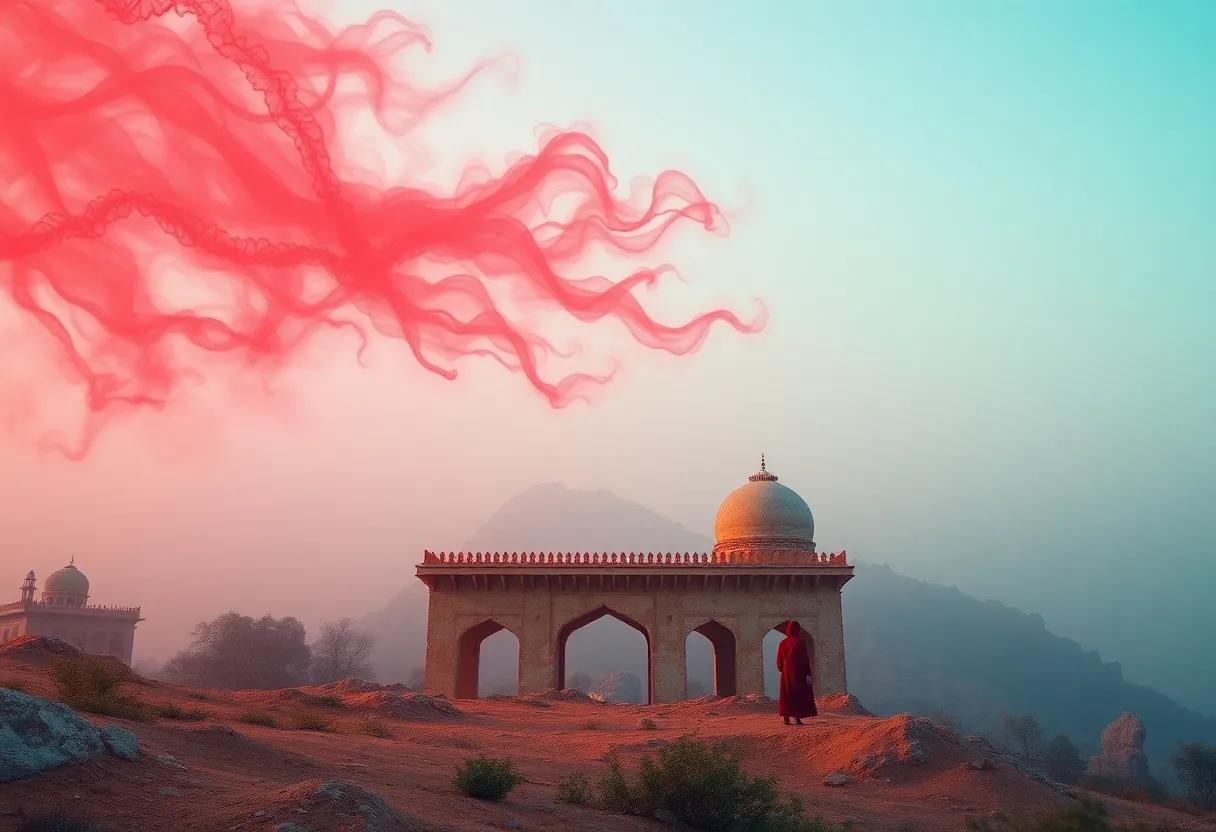
In her sweeping retelling of a classic tale, Renée Ahdieh immerses readers in a vibrant tapestry woven with the threads of Persian culture and tradition. With intricate world-building, she brings to life the enchanting landscapes, sumptuous food, and rich customs of a bygone era. Through the protagonist Shahrzad, who resonates resilience and intelligence, Ahdieh invites us to explore not only the romantic depth of her story but also the beautiful intricacies of a civilization that has long captivated the inventiveness.
the cultural richness of Ahdieh’s backdrop is exemplified through:
- Symbolic Cuisine: Dishes such as saffron-infused rice and spiced meats serve as more than just sustenance; they highlight the warmth of hospitality and the importance of gatherings.
- Majestic Architecture: The grand palaces and intricately designed gardens symbolize the opulence of Persian heritage, creating a stark contrast with the darker themes of power and fate.
- Traditions and Folklore: Throughout the narrative, the weaving of traditional stories adds layers of wisdom and mystery, grounding the plot in the authentic fabric of Persian lore.
| Element | importance |
|---|---|
| Cuisine | Emphasizes community and cultural identity |
| Architecture | Symbolizes power and heritage |
| folklore | Enriches the narrative with wisdom |
Pacing and Structure: Analyzing the Rhythm of Tension and Release

The intricate dance of pacing and structure in Renée Ahdieh’s ’The Wrath and the Dawn’ shapes the reader’s experience, creating a tapestry woven with strands of tension and moments of respite. Ahdieh expertly manipulates the rhythm of the narrative, alternating between swift bursts of action and quieter, reflective passages that allow characters—and readers—to catch their breath. This balance facilitates emotional investment, drawing us deeper into the lives of shahrzad and Khalid as they navigate a world teeming with peril and enchantment. Key elements that contribute to this dynamic include:
- Vivid Imagery: Rich descriptions envelop us in the story’s lush settings.
- Climactic Twists: Unexpected turns propel the plot forward, sustaining suspense.
- Character Development: Delicate moments of introspection invite us to connect with the protagonists.
Using an astute blend of pacing techniques,Ahdieh builds tension seamlessly,ensuring that each chapter leaves us craving the next. Let’s take a closer look at how these elements manifest throughout the novel in a structured manner:
| Chapter | Tension Level | Key Event |
|---|---|---|
| 1 | High | Shahrzad’s introduction and vow of vengeance |
| 5 | Moderate | Frist moments of connection with Khalid |
| 10 | very High | Uncovering a crucial secret |
| 15 | Low | Reflections and realizations |
This thoughtful arrangement keeps readers engaged, allowing them to experience both heart-stopping suspense and poignant character arcs. As Shahrzad navigates the intricacies of love and betrayal, Ahdieh’s masterful pacing mirrors the ebb and flow of the emotional currents within the narrative, revealing that, even the most tangled fates can reveal moments of breathtaking clarity.
Imagery and Language: Ahdieh’s Poetic Craftsmanship in Detail

Renée Ahdieh’s literary prowess is vividly outlined through her exquisite use of imagery, which invites readers into a world where every detail is painted with emotional depth and vivid colors. Ahdieh crafts scenes that are both breathtaking and haunting, creating a rich sensory experience that elevates the narrative. Her descriptions are not mere embellishments but serve to immerse the reader in the atmosphere of ancient Persia, where glistening fabrics and spicy aromas dance around the protagonists, drawing them—and us—deeper into the story. The use of metaphors and similes further sharpens our understanding of character emotions, illuminating their motives with clarity and passion.
Moreover, the author’s command of language is evident in her lyrical prose which flows with a rhythm that mirrors the tension of the tale. Through her poetic craftsmanship, Ahdieh manipulates words to evoke feelings of love, despair, and the intertwining of fate, allowing readers to experience the stakes and the beauty intertwined within them. In addition, her attention to symbolism adds a layer of meaning that enhances our engagement with the text. Elements such as the moon and the stars become powerful motifs that represent both hope and despair, crafting a nuanced tapestry of emotions that lingers long after the last page is turned.
Supporting Characters: The Influential Cast Shaping the Tale
In the vibrant world of renée Ahdieh’s narrative, supporting characters emerge as pivotal threads in the rich tapestry of the story.shahrzad, the resolute heroine, is not alone; she is flanked by a cast that complements and challenges her resolve. Each character possesses unique traits that enhance the overarching themes of love, betrayal, and the quest for justice.Consider the enigmatic Khalid, whose complex motivations elicit both sympathy and distaste – it is indeed a masterful depiction of a character shaped by circumstance. Then there’s Tariq, embodying loyalty and the fierce protectiveness of a childhood friend. his unwavering support for Shahrzad provides a stark contrast to Khalid’s brooding nature, creating a tension that propels the plot forward.
Moreover, the inclusion of vivid secondary personalities adds enriched layers and highlights the protagonist’s journey. Characters like Despina and the Sultan resonate as crucial influences, each stirring the pot of intrigue and displaying the socio-political climate of the realm. Their individual arcs not only drive the narrative but also touch upon themes of feminism and autonomy within a patriarchal society. The following table summarizes their roles and impacts:
| Character | Role | Impact |
|---|---|---|
| Shahrzad | Protagonist | Fierce determination to end the cycle of violence |
| Khalid | Antagonist | Complexity of villainy rooted in tragedy |
| Tariq | Ally | Embodiment of loyalty and love |
| Despina | supportive confidant | Represents female solidarity and strength |
Emotional Resonance: The Impact of sacrifice and Betrayal

In Renée Ahdieh’s ‘the Wrath and the Dawn’, the potent themes of sacrifice and betrayal intertwine to create a rich tapestry of emotional resonance that echoes deeply with readers. The protagonist, Shahrzad, is thrust into a world where her fate hinges on her willingness to navigate dangerously thin lines between love, trust, and survival. Ahdieh masterfully illustrates how personal sacrifice often fosters the seeds of betrayal, encapsulating this complex dynamic in her vivid storytelling. Shahrzad’s journey is punctuated by moments where she must weigh the value of her own life against those she loves, deftly exposing the raw vulnerability inherent in each choice.
Moreover, betrayal acts as a pivotal catalyst for character development and plot progression throughout the narrative. The contrasting motivations of Shahrzad and Khalid unfold steadily, underscoring how relationships are frequently tested in the crucible of conflict.The narrative is enriched by compelling scenarios that bring forth core emotional decisions, such as:
- Shahrzad’s resolve to avenge her best friend, which propels her into a hazardous marriage.
- Khalid’s hidden past that reveals vulnerabilities behind his tyrannical facade.
- the delicate balance between love and vengeance that defines their evolving relationship.
This exploration of trust heightened by sacrifice and betrayal invites readers to reflect on the complexities of human emotions and moral dilemmas,making ‘The Wrath and the Dawn’ not just a tale of romance but a profound inquiry into the very essence of human connection.
Memorable Quotes: Highlights That Resonate with Readers

In Renée Ahdieh’s captivating narrative, the interplay of fate and choice manifests beautifully through thought-provoking quotes that linger with readers long after the final page. Moments of profound insight arise as characters grapple with love, loss, and the haunting shadows of their decisions.Consider the eloquence of the line, “we are all the stories we tell ourselves,” which encapsulates the essence of identity interwoven with personal narratives, encouraging reflection on how our experiences shape the tales we hold dear. Another striking moment is captured in the words, “What is a heart if not something that can be broken?” this profound musing speaks to the fragility of emotion, resonating deeply with anyone who has navigated the complex terrain of relationships.
Ahdieh’s masterful storytelling not only enchants with vivid imagery but also elevates poignant reflections that invite discourse. As an example, the sentiment, “Sometimes the choices we make are not truly ours,” challenges readers to ponder the nature of fate versus free will. This dilemma plays out against the lush backdrop of her intricate world, enriching readers’ engagement with the narrative. Below is a selection of some memorable quotes from the novel, spotlighting the wisdom woven throughout its pages:
| Quote | Character |
|---|---|
| “life is a book, and there are a thousand pages I have yet to write.” | Shahrzad |
| “Every story has its dark corners, but it is in the shadows we often find our own light.” | Khalid |
| “Hope is the thing with feathers that perches in the soul.” | Descriptive narration |
Comparative Works: Positioning Ahdieh Among Contemporary Authors

Renée Ahdieh’s storytelling has carved a distinct place within the contemporary literary landscape, showcasing her talent for weaving intricate narratives that captivate readers. Her works resonate with themes of power,betrayal,and identity,drawing comparisons to authors such as Sabaa Tahir,whose A Torch Against the Night also explores rich cultural tapestries and moral complexities. In conjunction, Roshani Chokshi offers a similar enchanting flair, evident in her novel The Star-Touched Queen, where mythology and romance intermingle seamlessly. Both authors, like Ahdieh, employ lush prose that brings their fictional worlds to life, crafting stories that feel both intimate and expansive at once.
In terms of character development and emotional depth, Ahdieh stands shoulder to shoulder with the likes of Victoria Aveyard, known for her gripping Red Queen series. Aveyard’s exploration of class struggles and personal sacrifice mirrors Ahdieh’s layered portrayals of her characters navigating the treacherous waters of loyalty and ambition. This positioning highlights the emergence of a new generation of authors who elevate traditional tropes, infusing them with diverse voices and perspectives. Such comparative analysis not only situates Ahdieh among her contemporaries but also underscores the contribution of her narratives to the rich tapestry of modern fantasy literature.
Recommendation for Fans: Who Will Fall for This Tale of Intrigue

For those enchanted by tales of romance and mystery, Renée Ahdieh’s novel offers a rich narrative that intertwines the fates of its characters in a mesmerizing way. Readers who enjoy strong, complex protagonists will find themselves captivated by Shahrzad, a young woman whose bravery and intellect allow her to challenge a ruthless king. As she delves deeper into the secrets of the palace and the haunting circumstances surrounding her nightly fate, you will find layers of intrigue and emotional depth that beckon you to turn the pages. The lush world-building, steeped in cultural nuances and magical realism, enhances the stakes and creates an unforgettable atmosphere that resonates with both adventure seekers and lovers of lyrical prose.
This story will especially appeal to fans of fantasy and historical fiction, as ahdieh masterfully weaves a tapestry that reflects themes of empowerment, betrayal, and the search for identity. The exploration of relationships is nuanced; the dynamics between characters evolve in unexpected ways, making every reveal feel authentic and impactful. Whether you’re drawn to the romance, the twists of fate, or the vivid settings, you’ll likely find yourself enchanted by Shahrzad’s journey. For those seeking novels that leave lingering questions about love and loyalty, this tale is sure to captivate your imagination.
Critical Reception: reader Reactions and Scholarly Insights

Renée Ahdieh’s ‘The Wrath and the Dawn’ has evoked a rich tapestry of responses from readers, with many captivated by its lush prose and intricate character dynamics.Reviewers have pointed out the following noteworthy aspects:
- Stunning imagery: Numerous readers commend Ahdieh’s ability to paint vivid scenes, transporting them to the exotic world of Shahrazad.
- Empowering Themes: The protagonist’s journey towards autonomy resonates deeply, fostering discussions on female empowerment.
- Romantic Tension: Many fans revel in the slow-burn romance, praising the delicate interplay of love and betrayal.
Scholarly critiques often focus on the narrative structure and cultural intertextuality within the novel. A compelling exploration reveals:
| Aspect | Insight |
|---|---|
| Narrative Style | Critics highlight Ahdieh’s blend of modern and traditional storytelling techniques. |
| cultural Significance | Scholars laud the book for reimagining historical narratives, offering a fresh perspective on Middle Eastern folklore. |
| Character development | In-depth analyses point to the transformative arcs of key characters, revealing complex motivations and moral ambiguities. |
Personal Reflection: What This Story Means to the Modern Reader
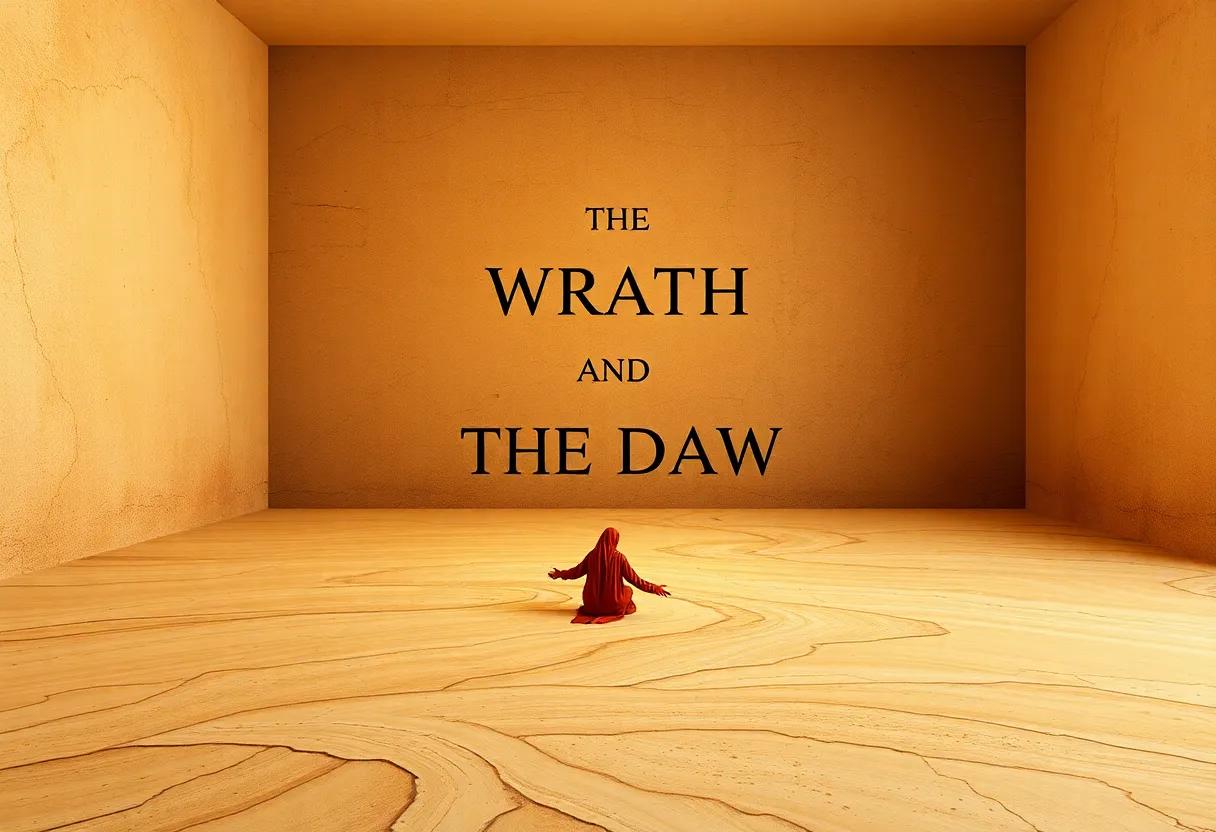
As modern readers delve into Renée Ahdieh’s captivating narrative,the intricate tapestry of fate woven throughout the storyline emerges as a compelling mirror reflecting our own struggles and choices. The story echoes timeless themes such as love, sacrifice, and the quest for identity, urging us to ponder our positions in a world dictated by fate and our responses to it. The characters are not merely figures in a tale but embodiments of our aspirations and fears, illustrating that the pursuit of agency amidst seemingly inescapable circumstances is a global human experience.
Furthermore, the rich cultural backdrop infused with mythology and tradition allows contemporary audiences to explore diverse perspectives that challenge the boundaries of their understanding. Ahdieh’s work invites readers to recognize the power of storytelling in transcending societal limitations and embracing the complexity of human emotions. By navigating through the labyrinth of the characters’ choices, we are encouraged to reflect on our own lives, examining how our decisions shape not only our destinies but the narratives we create along the way, ultimately inspiring a more profound connection to the myriad stories that grace our lives.
A Dive into the Author: Discovering Renée Ahdieh’s Journey and Influences
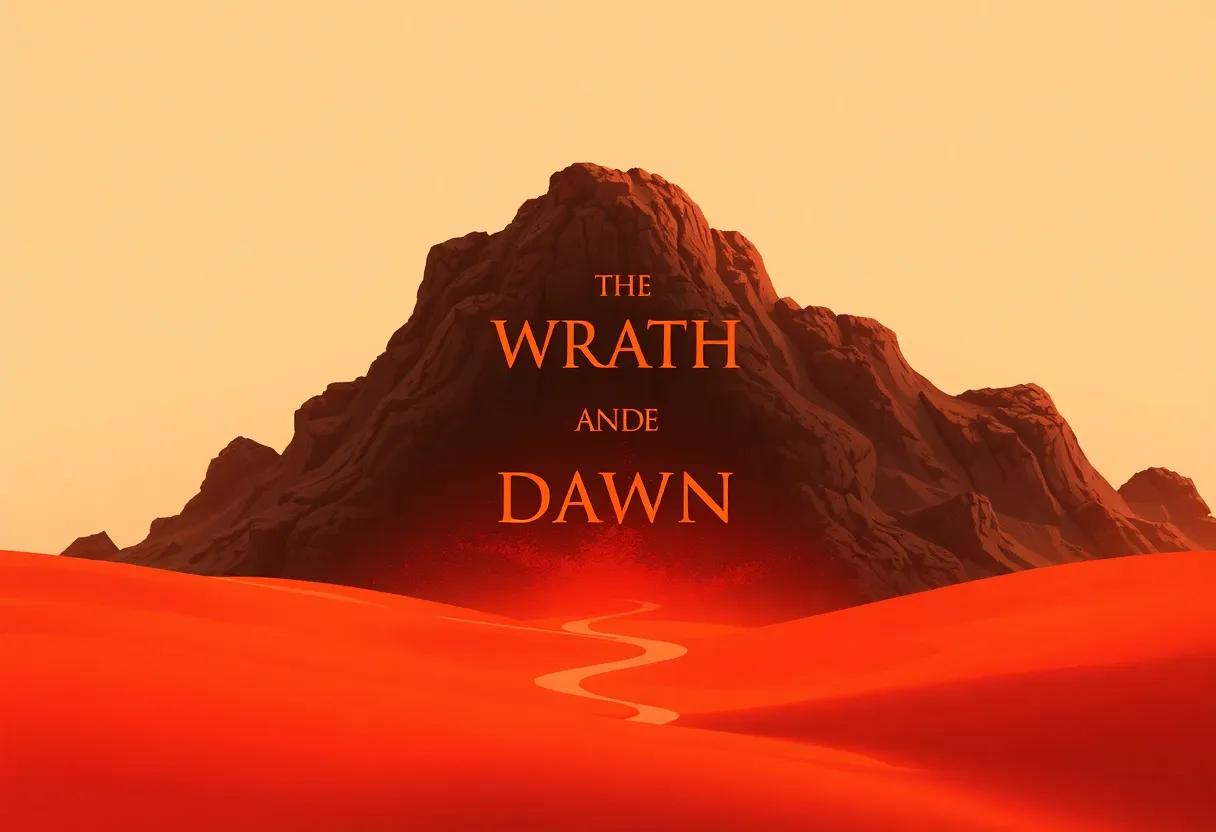
Renée Ahdieh’s literary journey is as intricate and compelling as the stories she weaves.Growing up in a household filled with rich cultural narratives, Ahdieh was influenced by her family’s diverse heritage, which cultivated a passion for storytelling early on. Her background in International Relations gives her an extraordinary lens through which she views the world,infusing her narratives with depth and nuance. She draws inspiration from various sources,including classic literature and global folklore,crafting tales that resonate with themes of love,betrayal,and the quest for identity. Ahdieh’s work reflects her love for the Middle Eastern culture, particularly in her acclaimed novel, where she revisits timeless tales and reinvents them through her unique perspective.
To better understand the rich tapestry of Ahdieh’s influence,it is indeed helpful to explore several key aspects that shape her narratives:
- Personal Background: Ahdieh’s roots in the middle Eastern community showcase the depth of her stories.
- Cultural Fusion: Blending diverse cultural elements creates a distinct atmosphere in her novels.
- Literary Traditions: Her affinity for classic literature enriches her narrative style and themes.
- Thematic Exploration: Central themes of love, empowerment, and fate are prevalent throughout her work.
As Ahdieh continues to write, her journey further intertwines with the lives of her characters, inviting readers to partake in her exploration of fate and choice. Her ability to draw from personal experiences while integrating universal truths adds layers of meaning to her storytelling, making her an influential voice in contemporary literature.
Closing remarks
Renée Ahdieh’s “The Wrath and the Dawn” weaves a captivating narrative that dances between the shadows of fate and the light of resilience. Through richly drawn characters and a tapestry of vivid imagery, Ahdieh invites readers to delve into a world where love can bloom amidst despair and where hope, once extinguished, can be reignited through courage and determination. This retelling of Scheherazade’s tale not only pays homage to its origins but also emerges as a fresh exploration of empowerment and choice. Whether you are drawn in by its enchanting prose or the intricacies of its plot, this novel leaves an indelible mark on the heart, echoing the age-old adage that the stories we tell can shape our destinies. As the final pages turn, one is left pondering: in the grand tapestry of life, what threads will we choose to weave?

